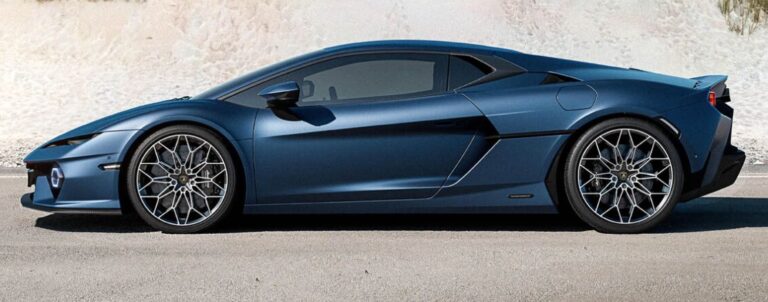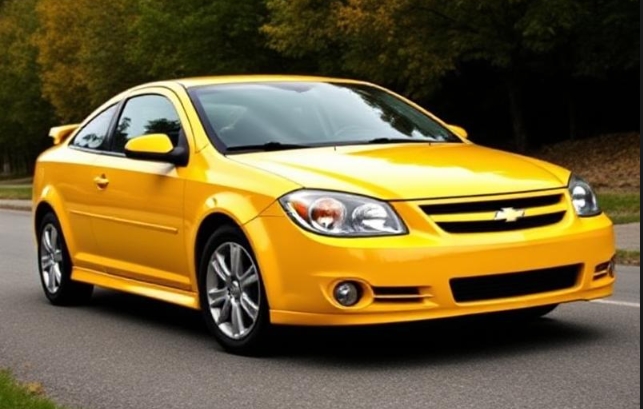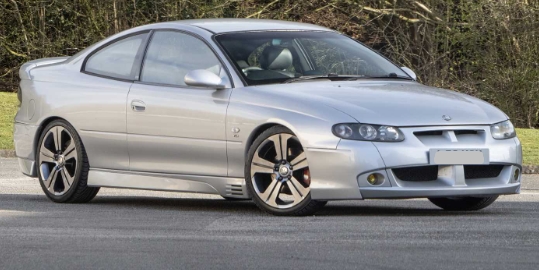The Volkswagen ID.5: Charting the Evolution of VW’s Electric Coupé
In the sweeping transition towards an electric future, Volkswagen has strategically built its “ID.” family not just as a series of individual cars, but as a comprehensive statement of intent. At the core of this electric offensive is the versatile MEB (Modular Electric Drive Toolkit) platform, a foundational architecture allowing for a diverse range of vehicles. While the ID.3 hatchback and ID.4 SUV laid the practical groundwork, the Volkswagen ID.5 emerged as the brand’s stylish emissary, blending the utility of an SUV with the elegant, sloping silhouette of a coupé. Though its history is relatively short, its evolution is a compelling story of refinement, response to customer feedback, and significant technological advancement.
The Genesis: From ID. CROZZ Concept to a Production Reality
The conceptual roots of the ID.5 can be traced back to the Volkswagen ID. CROZZ concept, first unveiled at the Shanghai Auto Show in 2017. This futuristic concept was a clear signal of VW’s ambition to create a family of electric vehicles that were not only sustainable but also desirable and dynamic. The ID. CROZZ previewed a sleek, coupé-like SUV with a rakish roofline, aggressive stance, and a minimalist interior. It showcased the potential of the MEB platform to deliver not just practicality, but also passion and style.
While the first production vehicle to be born from this specific concept was the more conventional Volkswagen ID.4 SUV (launched in 2020), the spirit of the ID. CROZZ’s distinctive design was destined for its own model. Volkswagen officially unveiled the production-ready ID.5 in November 2021, with the first customer deliveries beginning in early 2022. It was marketed as the more expressive, design-led sibling to the ID.4, sharing the same platform, wheelbase, and much of its interior, but differentiated by its dramatic, aerodynamically efficient rear profile.
.
THIS could come in handy for your auto garage (and everywhere else!):

.
The Debut (2022-2023): Establishing a Premium Identity
Upon its launch, the Volkswagen ID.5 was positioned as a slightly more premium offering than the ID.4. Unlike its SUV counterpart, which was available with smaller battery options in some markets, the ID.5 launched exclusively with the large 77 kWh (net usable) battery pack. This decision immediately established it as a long-range, high-specification model. The initial lineup was simple and logical, built around three distinct powertrain options.
Years Produced: 2022 – 2023 (Initial Specification)
Models and Trim Levels:
The core model structure was defined by the powertrain. Specific trim levels (like Style, Tech, and Max in the UK, or other designations in different European markets) were then layered on top of these core models, bundling equipment like ısı pumps, panoramic glass roofs, advanced driver assistance systems (Travel Assist), and augmented reality head-up displays.
- Volkswagen ID.5 Pro:
- Powertrain: This was the entry-level model, featuring a single, rear-axle-mounted electric motor producing 128 kW (174 PS) and 310 Nm of torque.
- Drivetrain: Rear-wheel drive (RWD).
- Performance: A 0-100 km/h (0-62 mph) time of 10.4 seconds and a top speed of 160 km/h (99 mph).
- Positioning: The ID.5 Pro was aimed at drivers who prioritized range and efficiency over outright performance. It offered the same stylish package but with a more relaxed driving character, making it an excellent long-distance cruiser.
- Volkswagen ID.5 Pro Performance:
- Powertrain: Using the same rear-mounted motor and 77 kWh battery, the Pro Performance was software-unlocked to produce a more potent 150 kW (204 PS) while maintaining the same 310 Nm of torque.
- Drivetrain: Rear-wheel drive (RWD).
- Performance: This power boost significantly improved acceleration, reducing the 0-100 km/h time to a more sprightly 8.4 seconds. The top speed remained limited to 160 km/h (99 mph).
- Positioning: The Pro Performance quickly became the volume seller and the sweet spot in the range. It provided a compelling balance of performance, efficiency, and real-world usability that appealed to a broad range of buyers.
- Volkswagen ID.5 GTX:
- Powertrain: The flagship model, the GTX, introduced a dual-motor, all-wheel-drive system. It combined the 150 kW rear motor with an additional asynchronous motor on the front axle, delivering a combined system output of 220 kW (299 PS) and 460 Nm of torque.
- Drivetrain: All-wheel drive (AWD).
- Performance: The GTX was the performance hero, capable of a 0-100 km/h sprint in just 6.3 seconds and reaching a higher top speed of 180 km/h (112 mph).
- Positioning: The “GTX” moniker was established by Volkswagen as the electric equivalent of its famed “GTI” badge. The ID.5 GTX was not just about straight-line speed; it featured sportier suspension tuning, progressive steering, and distinct styling cues, including unique front and rear bumpers, 20-inch standard wheels, and signature interior accents with red contrast stitching. It was the emotional and dynamic pinnacle of the ID.5 family.
During this initial period, the ID.5 was praised for its sleek design, spacious interior (despite the sloping roofline), and comfortable ride. However, like other early ID. models, it faced criticism directed at its infotainment system. The software was occasionally slow, and the non-illuminated touch sliders for volume and climate control beneath the main screen were a significant ergonomic flaw, particularly for night-time driving.
The First Major Evolution (Late 2023 for the 2024 Model Year): A Leap in Power and Technology
Recognizing the need for refinement, Volkswagen introduced a substantial update for the ID.5, beginning with models produced in late 2023 for the 2024 model year. This was far more than a simple facelift; it was a comprehensive hardware and software overhaul that addressed key criticisms and dramatically improved the vehicle’s performance and user experience.
The cornerstone of this evolution was the introduction of Volkswagen’s new, highly efficient APP550 electric drive unit. This new rear motor was a game-changer, featuring stronger permanent magnets, an improved stator, and a new inverter. The result was significantly more power and torque, delivered with greater thermal stability and efficiency.
Years Produced: 2024 – Present
Revised Models and Trim Levels:
This technological leap prompted a restructuring of the ID.5 lineup. The “Pro Performance” moniker was retired, as the new base model now surpassed its output.
- Volkswagen ID.5 Pro:
- Powertrain: The new APP550 rear motor elevated the base model’s output to an impressive 210 kW (286 PS) and a massive 545 Nm of torque. This was a remarkable 82 PS and 235 Nm increase over the previous Pro Performance model.
- Drivetrain: Rear-wheel drive (RWD).
- Performance: The 0-100 km/h time plummeted to just 6.7 seconds, placing the standard ID.5 firmly in performance-oriented territory.
- Positioning: This update transformed the ID.5 Pro from a capable cruiser into a genuinely quick and responsive vehicle. It now offered a level of performance that was previously the domain of dedicated sports saloons, fundamentally enhancing its driving appeal.
- Volkswagen ID.5 GTX:
- Powertrain: The flagship GTX also benefited from the new technology. While retaining its dual-motor setup, the new, more powerful rear motor pushed the combined system output to 250 kW (340 PS).
- Drivetrain: All-wheel drive (AWD).
- Performance: The already quick GTX became even faster, with its 0-100 km/h time dropping to a blistering 5.4 seconds.
- Positioning: The updated GTX solidified its status as a true electric performance SUV. The power increase, combined with revised software for power management and chassis control, made it a more engaging and potent machine.
The Crucial Interior Upgrade:
Alongside the powertrain revolution, Volkswagen introduced a brand-new infotainment system. This was a direct response to the most persistent criticism of the first-generation ID. models.
- New Display: The standard touchscreen grew from 12 inches to a larger, more responsive 12.9-inch display.
- New Software (MIB4): The system runs on a next-generation software platform (MIB4), featuring a more intuitive menu structure, faster processing speeds, and a more logical layout. The climate controls are now permanently visible at the bottom of the screen.
- Illuminated Sliders: Critically, the touch sliders for temperature and volume control located beneath the screen were finally illuminated, rectifying the most significant usability complaint of the original system.
Further refinements included a new multifunction steering wheel with a revised button layout and improvements to the optional augmented reality head-up display. Additionally, models with the 77 kWh battery saw an increase in DC fast charging speeds, and a new battery pre-conditioning function was introduced, allowing the system to warm the battery en route to a charger for optimal charging speeds.
Conclusion: A Trajectory of Rapid Refinement
The evolution of the Volkswagen ID.5, though condensed into a short timeframe, is a powerful illustration of the fast-paced nature of the electric vehicle industry. It began its life in 2022 as a stylish, competent, and desirable electric coupé-SUV that successfully translated the ID. CROZZ concept into a tangible product. The initial lineup of Pro, Pro Performance, and GTX offered clear choices for different priorities.
However, its most significant evolutionary step occurred with the 2024 model year update. By introducing the powerful APP550 motor and completely overhauling the infotainment system, Volkswagen demonstrated a commitment to rapid, meaningful improvement. The ID.5 was transformed from a good car with some notable flaws into an outstanding one, boasting class-leading power in its standard configuration and a user interface that was finally worthy of the technology it controlled. This evolution shows a brand that is not just producing EVs, but is actively listening, learning, and iterating to perfect its formula for the electric era. The ID.5 now stands not just as a style icon within the ID. family, but as a benchmark for how quickly a modern EV can mature.







